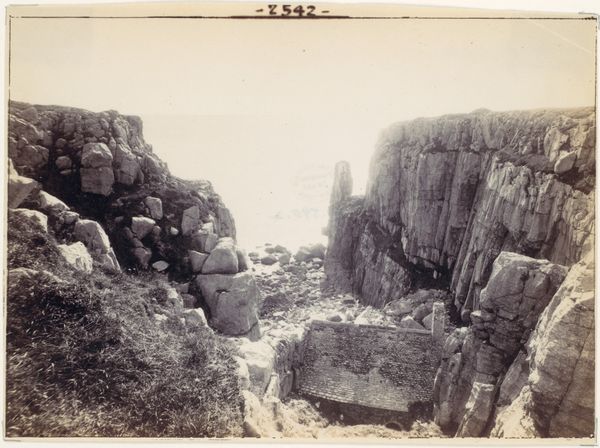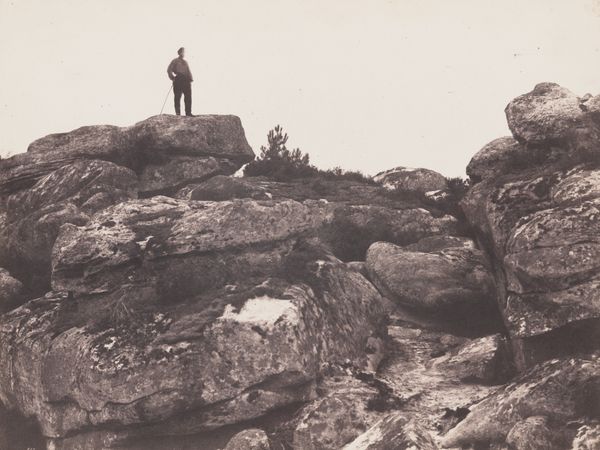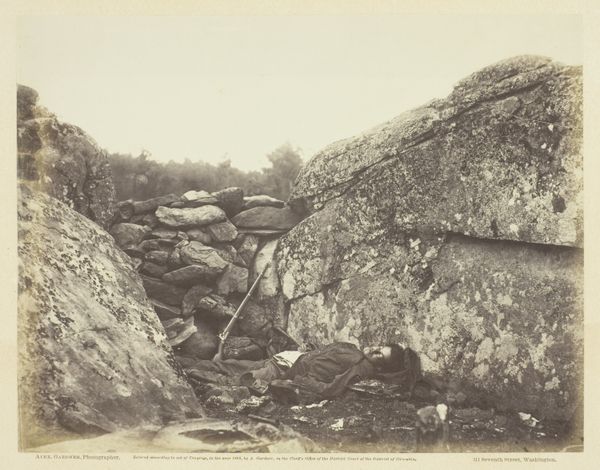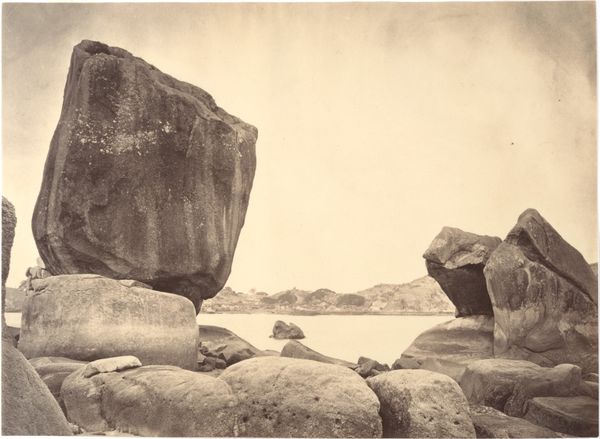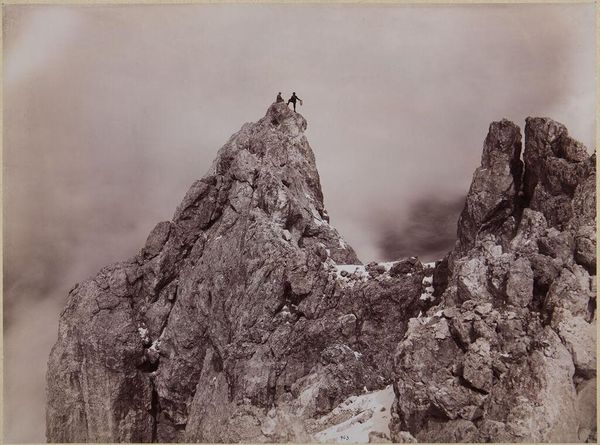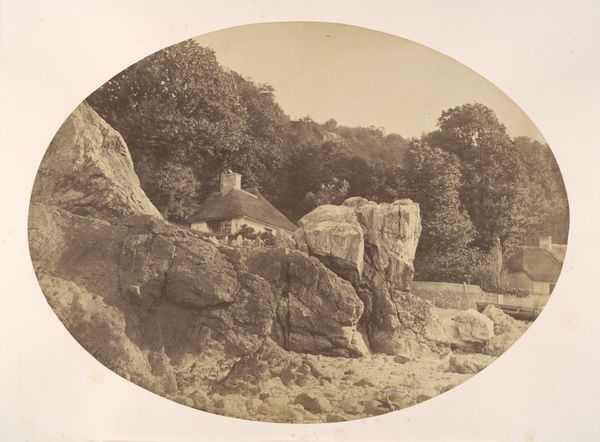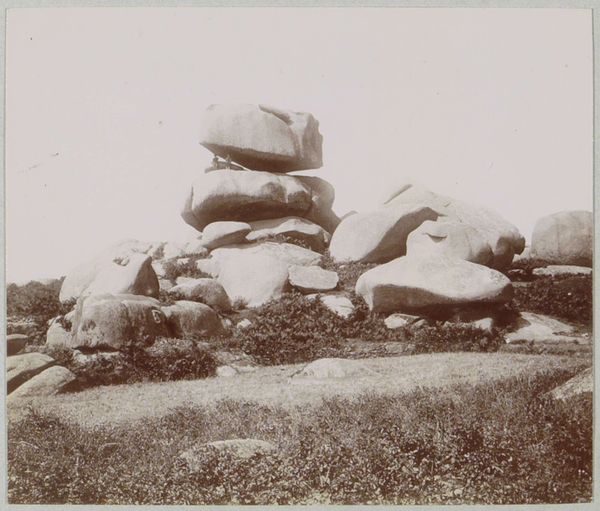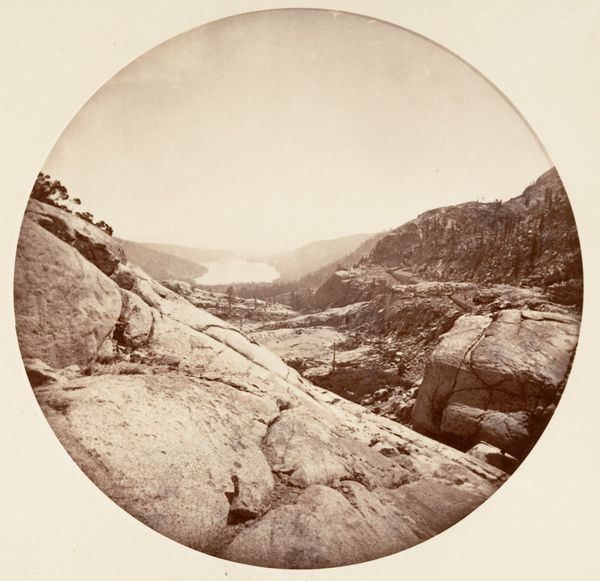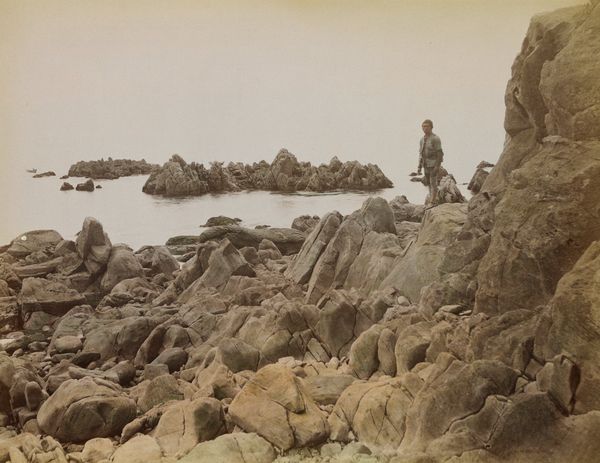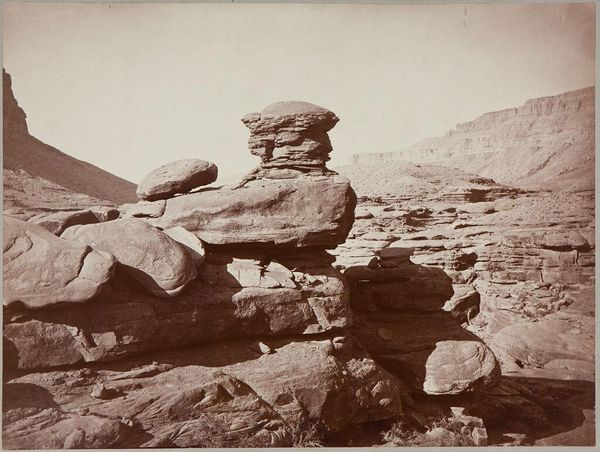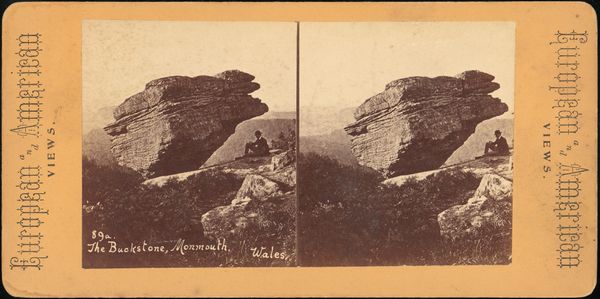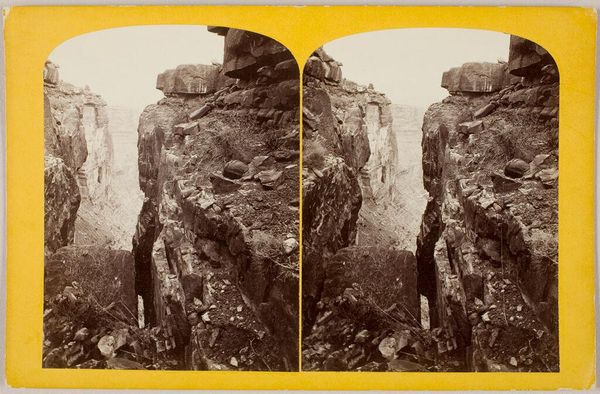
Dimensions: image: 28 × 38.4 cm (11 × 15 1/8 in.) mount: 44.6 × 54.5 cm (17 9/16 × 21 7/16 in.)
Copyright: National Gallery of Art: CC0 1.0
Editor: This photograph, "The Logan Rock, South Coast of Cornwall," was taken by William May around the 1860s. It shows a really striking rock formation with a person standing on top. What I find most impressive is its sheer geological presence – so monumental, yet captured in such detail. How do you read this photograph? Curator: The Logan Rock itself carries potent symbolism. It was briefly toppled by a nephew of Oliver Cromwell, who was then compelled to restore it at great expense! It’s a reminder that even seemingly immutable natural forms can be vulnerable to the whims and assertions of patriarchal power. May's work then intersects with narratives of colonialism, particularly in its fascination with 'untouched' landscapes that often overlooked indigenous histories and exploitation. Do you think the photographer's intentions aligned with the subject, or did his lens unintentionally underscore these tensions? Editor: I think that May may have just been capturing an awesome rock formation! However, I understand how that can erase the political, historical context. The act of photographing it and presenting it does change it. It's really fascinating. Curator: Precisely. That tension, between aesthetic appreciation and the unacknowledged social and political narratives embedded within landscape photography, opens a space for us to consider the legacy of that photographic representation. So, where do we locate the artist’s identity, their social agency? Can photographs, intentionally or not, subtly reinforce certain assumptions about class, power, and our relationship with the environment? Editor: Absolutely! Thank you, I hadn't thought about it in those terms before! This is so helpful, contextualizing May's photography in a wider arena of interpretation. Curator: It's always useful to look at works in a social context; our engagement can create productive conversation that transcends simply "looking".
Comments
No comments
Be the first to comment and join the conversation on the ultimate creative platform.
